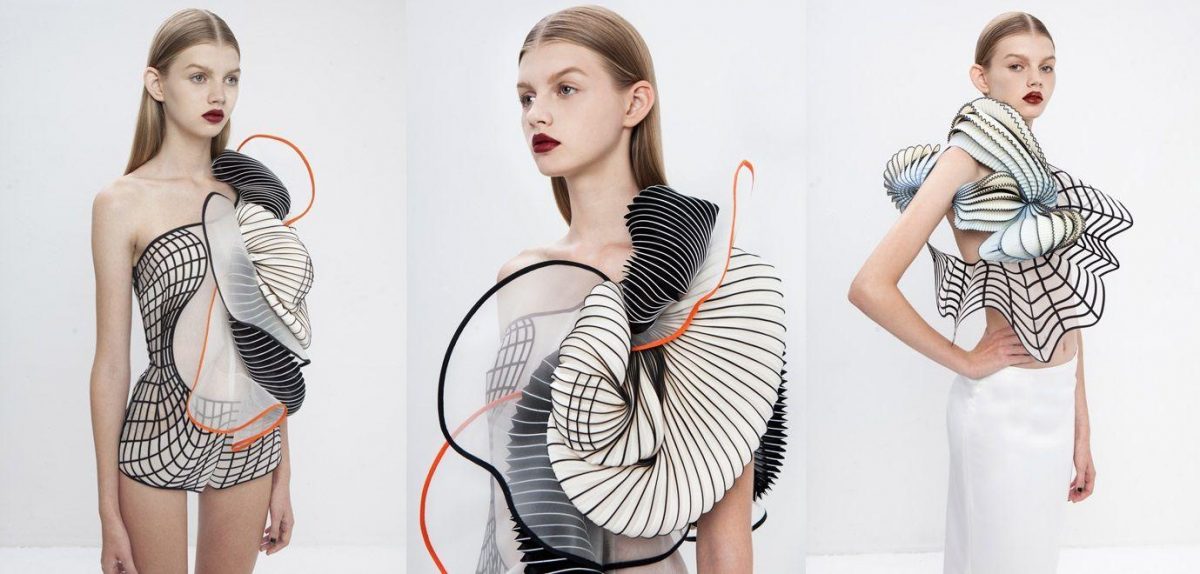
New Dimension: What Does 3D Printing Mean For The Fashion Industry?
Convenient couture? Bazaar explores the design implications of 3D printing
Fabric displaying prints designed digitally, models walking through holograms of themselves on the catwalk and wearable machines disguised as jewellery – the influence of modern science is becoming difficult to overlook within fashion’s current climate. Advances in the sphere have meant that being alerted to a new email via your earrings, or kaleidoscopic patterns created solely by a computer, are commonplace within many brand operations now – NYFW S/S17 alone saw a wave of new launches including Michael Kors’ own smart watch line – and tech’s foothold in fashion has some analysts predicting the wearable technology market will be worth Dhs125 billion by 2020.
With this in mind, Bazaar considers what’s next for the appeal of tech-influenced accessories and textiles. An interesting, less commercialised avenue is the development of 3D printing and what it means to the consumer. The conversation was highlighted at this year’s Manus x Machina exhibition at the Met Costume Institute, where visitors were treated to 90 futuristic high-fashion garments to pore over, many of which made with 3D printing.

Chanel. Courtesy of The Metropolitan Museum of Art
Such outfits – a layered, cross-hatched suit from Chanel’s 2015-16 autumn/winter haute couture line, an impossibly complex polyamide top from Dutch designer Iris Van Herpen’s Spring/Summer 2010 collection – may seem oh-so exotic to us now, however like with any progression in both fashion and science, and 3D printing becoming more accessible, it’s certainly time to prepare for more to come from the concept. But how much? Are we looking at a revolutionary step forward to match that of the electric sewing machine? A future of bespoke, individual garments can be produced at home, to spec?
Of course couture clothes, to go by the traditional definition, are, “Items made for you, that fit your body,” says Andrew Bolton, curator of Manus x Machina. We know that to mean: Expensive, rare, and difficult to find. And within the Middle East market in particular, each of these qualities makes the notion of couture all the more appealing. But bring 3D printing into the mix, and this extravagance could theoretically move into any home or office space that owns a printer, making that couture decidedly less haute. “Because it has the ability to mould exactly to your measurements, it’s environmentally friendly, too,” Bolton adds, in the case for technology over traditional style in its most literal sense. “There’s also no waste, whereas there’s always waste with textiles.”
 Close up of a 3D print fabrication. Source: 3DPrint.com
Close up of a 3D print fabrication. Source: 3DPrint.com
However, put your carbon footprint guilt aside for now and relax, couture queens. The reality is that 3D printing in its entirety is still very much in its early stages. Software companies can now create the technology with the capability to make virtually anything solid that a computer can model, but wearing an object is a different matter. Items produced are stiff and armour like, which means accessories (footwear, eyewear, jewellery) and non-pliable garments are all that are feasible for now, with 3D printed fabrications not coming close in quality to cotton or Lycra, let alone natural silk.

Iris van Herpen. Courtesy of The Metropolitan Museum of Art
On the plus side for fashion, this lends itself well to the likes of Iris Van Herpen’s well-documented pieces of art that showcase regularly at couture week in Paris, reminiscent of McQueen drenched in futuristic allure. Or take the work of rising Israeli designer Noa Raviv, from whom we witnessed a graduate collection shown at the Shenkar College of Design in Ramat Gan, Israel, infused with integrated 3D printed elements, complex flat pattern designs, and the distortion of a grid in order to create a series of garments.
Holding a talk during Manus x Machina earlier this year, Ravi quoted her thesis, “Classical Greek sculpture once represented an ideal of beauty. It was copied and reproduced many times throughout history until it became an empty repetition of style and expression. We live in a culture where everything is replicated, so what is the value of an original object.” Mirroring the same questions that pepper conversations now about the implications that 3D technologies hold for production and reproduction; without question a profoundly important debate in revaluating the value of garments as we move into the future.
However, to live in a world in which the skill and craftsmanship of an experienced couturier can be replicated by an at-home printer is beyond our generation. For now, we can marvel at the creation of artistic showpieces and one-off structures, rather than reel off cocktail dresses. The world of convenient couture awaits…

Noa Raviv’s 2014 graduation collection, titled ‘Hard Copy’
